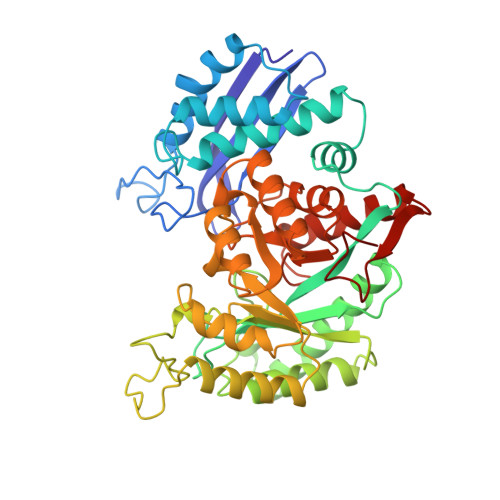Refined structure of yeast apo-enolase at 2.25 A resolution.
Stec, B., Lebioda, L.(1990) J Mol Biology 211: 235-248
- PubMed: 2405163
- DOI: https://doi.org/10.1016/0022-2836(90)90023-F
- Primary Citation of Related Structures:
3ENL - PubMed Abstract:
The crystal structure of apo-enolase from baker's yeast (Saccharomyces cerevisiae) was established at 2.25 A resolution using a restrained least-squares refinement method. Based on 21,077 independent reflections of better than 8 A resolution, a final R-factor of 15.4% was obtained with a model obeying standard geometry within 0.017 A in bond length and 3.5 degrees in bond angles. The upper limit for the co-ordinate accuracy of the atoms was estimated to be 0.18 A. The refinement confirmed the heterodox, non-parallel character of the 8-fold beta alpha-barrel domain with beta beta alpha alpha(beta alpha)6 topology. The reported structure for which the data were collected at pH 5.0 represents an apo-form of the enzyme. Of the three carboxylic ligands that form the conformational metal ion binding site two, Glu295 and Asp320, are very close and presumably form a strong acidic type hydrogen bond with the proton partially replacing the electric charge of the physiological cofactor Mg2+. The single sulfate ion found in the structure is in the active site cavity, co-ordinated to the side-chains of Lys345 and Arg374, and to the N atom of Ser375. It is located about 7.4 A from the conformational metal ion binding site. It occupies the site in which the phosphate group of the substrate binds.
- Department of Chemistry, University of South Carolina, Columbia 29208.
Organizational Affiliation:

















